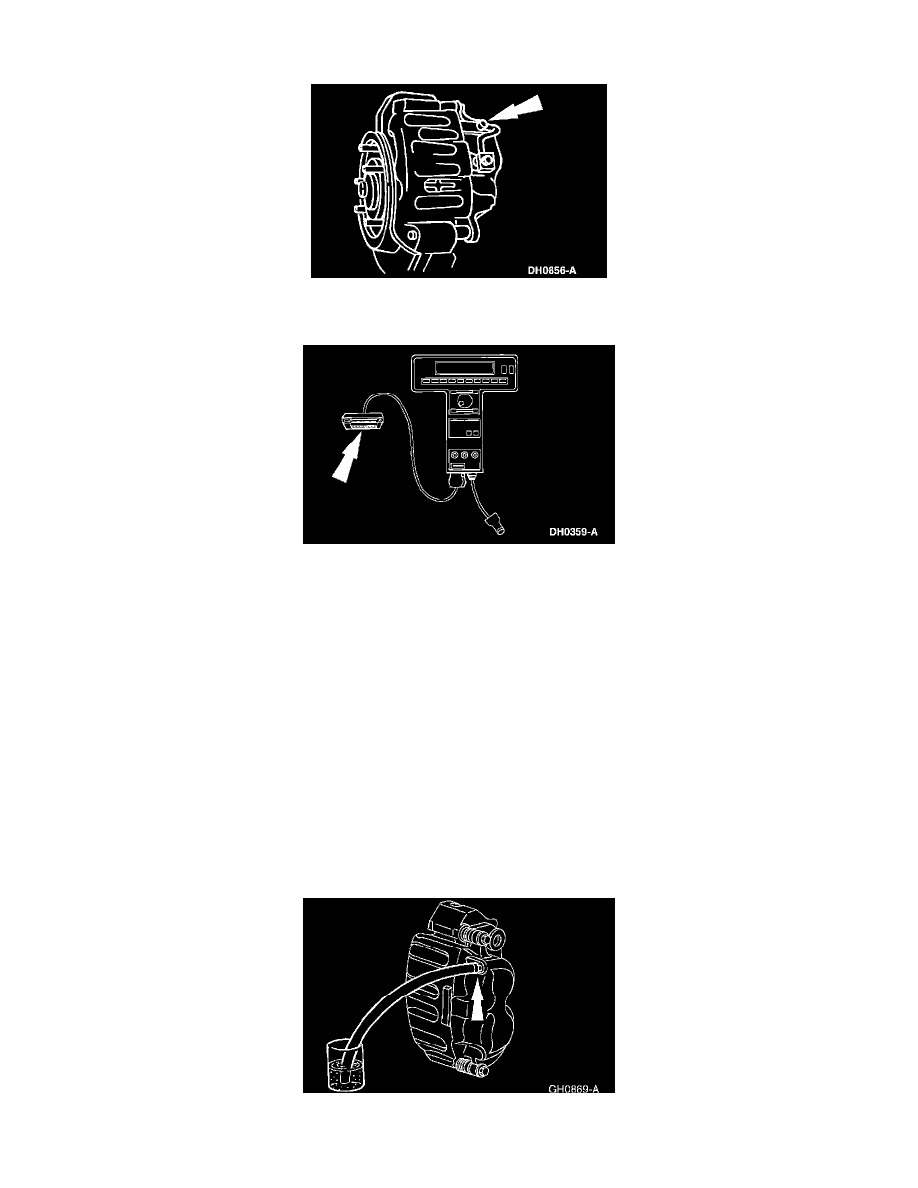F 150 Heritage 4WD Pickup V8-5.4L SOHC VIN Z Bi-fuel (2004)

4. Tighten the RH rear bleeder screw, and disconnect the waste line.
5. Repeat Steps 2, 3 and 4 for the LH rear bleeder screw, the RH front disc brake caliper bleeder screw, and the LH front disc brake caliper bleeder
screw, in that order.
6. Connect the scan tool DCL cable adapter into the vehicle Data Link Connector (DLC) under the dash, and follow the scan tool instructions.
7. Repeat the system bleed procedure as outlined in Steps 1 through 5.
Caliper
WARNING: Use of any other than approved DOT 3 brake fluid will cause permanent damage to brake components and will render the
brakes inoperative.
WARNING: Brake fluid contains polyglycol ethers and polyglycols. Avoid contact with eyes. Wash hands thoroughly after handling. If brake
fluid contacts eyes, flush eyes with running water for 15 minutes. Get medical attention if irritation persists. If taken internally, drink water
and induce vomiting. Get medical attention immediately.
CAUTION: Brake fluid is harmful to painted or plastic surfaces. If brake fluid is spilled onto a painted or plastic surface, immediately wash it with
water.
CAUTION: Do not allow the master cylinder to run dry during the bleeding operation. Keep the master cylinder filled with the specified brake fluid.
Never use brake fluid that has been drained from the hydraulic system.
1. NOTE: It is not necessary to do a complete brake system bleed if only the disc brake caliper was disconnected.
Place a box end wrench on the disc brake caliper bleeder screw. Attach a rubber drain tube to the disc brake caliper bleeder screw, and submerge
the free end of the tube in a container partially filled with clean brake fluid.
